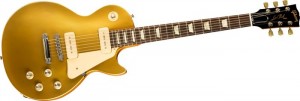 On Friday 11/18 the 1 Uppers performed at Slim’s Last Chance Chili Shack in Seattle. This venue is one of my favorite places on our regular circuit. It’s a cozy room that gives off the perfect vibe of great music, cold beer and yummy chili.
On Friday 11/18 the 1 Uppers performed at Slim’s Last Chance Chili Shack in Seattle. This venue is one of my favorite places on our regular circuit. It’s a cozy room that gives off the perfect vibe of great music, cold beer and yummy chili.
I’ve been playing a lot of shows with the Dudley Manlove Quartet lately, and my bandmates in the 1 Uppers are gracious in allowing me to balance my time between the bands. So it has been over a month since we had the band in full force, and at this gig we worked with substitute drummer Andy Roth. At our rehearsal Thursday evening it was evident that we were ready to attack this show with a lot of energy, and I had a feeling it was going to be a good one. Andy (drums) was perfectly prepared for this set, the mark of a pro player!
At rehearsal on Thursday the songs were perfectly arranged (not by me) to group the songs where I play baritone guitar all together. This meant only one switch between baritone and regular guitar during the rehearsal set. Naturally, at the gig we move a few songs around which meant switching four times! Good thing I can move fast. The set was great. You can tell when it’s going well onstage, and there was a fun relaxed vibe as tore through the songs. The set concluded with the audience demanding an encore, which we’re happy to do… just unusual to have such energetic reception. Another fun night with great friends. I look forward to the next one!
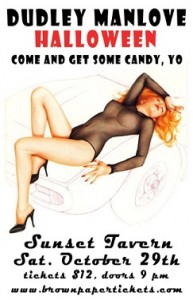 On Saturday 10/29 the Dudley Manlove Quartet will be performing our annual Halloween Spooktacular show at the Sunset in Ballard. Every year our Halloween show includes our tribute to some other band, so our second set involves a costume change and we come onstage to play a number of songs as another band. In past years we’ve done such bands as The Talking Heads, Spinal Tap, The B52’s and David Bowie. This year we’re working up songs from another band; technically it’s a surprise, but I think most people have a strong hunch based on the (outright blatant) clues we’ve dropped 🙂
On Saturday 10/29 the Dudley Manlove Quartet will be performing our annual Halloween Spooktacular show at the Sunset in Ballard. Every year our Halloween show includes our tribute to some other band, so our second set involves a costume change and we come onstage to play a number of songs as another band. In past years we’ve done such bands as The Talking Heads, Spinal Tap, The B52’s and David Bowie. This year we’re working up songs from another band; technically it’s a surprise, but I think most people have a strong hunch based on the (outright blatant) clues we’ve dropped 🙂
I’ve been transcribing guitar parts and working up the tones to recreate the style of the guitarist in this year’s band. It should be a very enjoyable show and I know we’re all looking forward to playing this special set.
For the gig this weekend I’m planning to bring my trusty Mesa Boogie Lonestar, two Stratocasters (the black custom shop model and the white Eric Johnson model), my pedalboard, and the usual miscellany of cords and stands. Definitely going to be a show to remember. If you haven’t already gotten a ticket, we only have a few dozen remaining, so act now!
Posted in:
Music,
My Bands
 On Sunday 10/9 the 1 Uppers performed at the Sunset Tavern in Ballard. This venue feels like home to me, given the large number of regular performances I have there with the Dudley Manlove Quartet. This was another very enjoyable show with the 1 Uppers, and we’re continuing to develop our musical communication onstage.
On Sunday 10/9 the 1 Uppers performed at the Sunset Tavern in Ballard. This venue feels like home to me, given the large number of regular performances I have there with the Dudley Manlove Quartet. This was another very enjoyable show with the 1 Uppers, and we’re continuing to develop our musical communication onstage.
When I play at the Sunset with DMQ, I’m over on stage left which means I’m standing more or less behind the PA mains in a dark corner of the stage. I do jump out and stand on the subwoofer for big solos, but most of the time I’m pretty tightly tucked back into that corner. With the 1 Uppers I tend to be on stage right, standing behind Jon Hyde on pedal steel. So this gave me a nice open area in which to play. Always good to have a little room to roam 🙂
The show was part of a triple bill. Fortunately we were on first and it meant that we could get a soundcheck – AND it meant we were done at a mercifully early hour. Our set consisted of mostly originals with a few selected covers. For this show I brought a pretty lightweight rig, consisting of the Fender Hot Rod Deluxe and my micro-pedalboard (Line6 M9 + Ernie Ball volume pedal). I’m working on putting together a new pedalboard base for those two items, which should be small enough to fit into an Anvil briefcase. It’ll make an easy rig for fly dates. During the course of the show I switched guitars several times between regular electric guitar to baritone guitar. I’m finding that playing baritone guitar is a great experience and clears some space in the mix where the other guitars reside. The 1 Uppers have a number of gigs coming up in the next month and I think it’ll be great for our sound. Always a delight playing music with great friends!
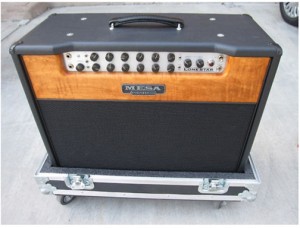 On Friday 9/16 The Dudley Manlove Quartet performed at the Wallingford Wurst Festival in Seattle. It’s an event the band has performed in years past but was my first time. The event occurs at a local Catholic grade school in Wallingford. Just entering the building was a flashback to my elementary school years in Catholic school. It’s funny how eerily similar all such schools are – especially those that appear to be of the same approximate vintage. Seeing that classic linoleum and tile environment made me nostalgic and slightly anxious (I have a completely irrational fear of yardsticks as a result of a few thousand thwacks from irate nuns).
On Friday 9/16 The Dudley Manlove Quartet performed at the Wallingford Wurst Festival in Seattle. It’s an event the band has performed in years past but was my first time. The event occurs at a local Catholic grade school in Wallingford. Just entering the building was a flashback to my elementary school years in Catholic school. It’s funny how eerily similar all such schools are – especially those that appear to be of the same approximate vintage. Seeing that classic linoleum and tile environment made me nostalgic and slightly anxious (I have a completely irrational fear of yardsticks as a result of a few thousand thwacks from irate nuns).
Our performance took place in the auditorium, which was also the beer garden for this event. Washington State has a law prohibiting musicians from drinking onstage, and whenever we perform in bars we’re reminded that there will be no drinking permitted onstage. Ironically, Catholic grade schools seem to be exempt from this law, so the band was delighted to have cups of tasty IPA while playing. For this show I put the Lonestar on the amp stand, placed about two-thirds of the way toward the back of the stage. It seems to me that most Boogies have a tendency to be “beamy”; they produce a very tightly focused output that doesn’t fill the stage. My Boogie Mark III, and my Boogie 1×12 cabinets had a very tight pattern onstage that allowed my to place the amp very far away and still hear it – provided I stood directly in line with the speaker… just a single step to the left or the right and the sound was gone. The Lonestar has a much more “Fender” type spread and cleanly fills my playing position with usable volume.
At this gig I tried running the clean channel a little hotter. It’s interesting that the clean channel on this amp still has considerable headroom even at the higher end of its gain structure. My Strats are wired with medium output pickups so I generally don’t wind up with much unwanted grit. The lead channel on the Lonestar has a good bark to it but still has clean articulation for chords. Compared with my Fender Twin, the Lonestar has a truer gain structure; it seems to me the Fender AB763 circuit has a tendency to naturally compress the guitar dynamics. I’m finding the Keeley compressor is more usable with this amp than with the Twin. The entire gig was an opportunity to try new settings on my pedalboard, with new clean tones and more amp-based drive in the lead settings. It’s especially good for big driven tones for songs like “Rio” and “Don’t Stop Believing”. The gig was a great success and we look forward to the next event!
 About a month ago I sold my Fender Twin and purchased a Mesa Boogie Lonestar 1×12 to replace it. The Twin is a great amp and produces a classic tone. My decision to switch to the Lonestar was prompted by hearing the great tones the amp produces, and by my interest in getting a better blues tone. The Lonestar has two channels, “clean” and “drive”. Each channel can be set to 100 watts using a solid state rectifier, or 50 watts using tube / solid state (switchable) rectifier. The overall reverb level for each channel is assignable and there is a programmable boost function for solos.
About a month ago I sold my Fender Twin and purchased a Mesa Boogie Lonestar 1×12 to replace it. The Twin is a great amp and produces a classic tone. My decision to switch to the Lonestar was prompted by hearing the great tones the amp produces, and by my interest in getting a better blues tone. The Lonestar has two channels, “clean” and “drive”. Each channel can be set to 100 watts using a solid state rectifier, or 50 watts using tube / solid state (switchable) rectifier. The overall reverb level for each channel is assignable and there is a programmable boost function for solos.
Overall the amp produces a fantastic clean tone with deep dimensionality and lovely coverage. It has a pure 1:1 response for input dynamics, which is unlike the Twin with its natural compression. It was easy to get a beautiful clean sound out the amp, and to get a classic driven blues tone from the lean channel. On-stage coverage is amazing from this amp. For a single 12 inch speaker it has surprisingly broad spread. I’m pretty pleased so far and look forward to putting this amp through its paces at upcoming gigs.
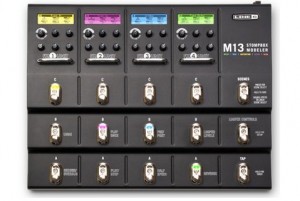 I am interested in using my iPad (and iPhone) as a controller surface for music applications and hardware. Most of my equipment can be controlled via either MIDI or USB. My preference is always USB over MIDI, and for live use I prefer bluetooth. Some equipment manufacturers do not provide USB for music equipment at all, defaulting to MIDI as the standard. I’m especially baffled by the omission of USB from my Line6 M13 and M9 processors; my Line6 XTLive is several years older and has full USB implementation *plus* a great GUI editor. I hope there will be a update to these devices eventually.
I am interested in using my iPad (and iPhone) as a controller surface for music applications and hardware. Most of my equipment can be controlled via either MIDI or USB. My preference is always USB over MIDI, and for live use I prefer bluetooth. Some equipment manufacturers do not provide USB for music equipment at all, defaulting to MIDI as the standard. I’m especially baffled by the omission of USB from my Line6 M13 and M9 processors; my Line6 XTLive is several years older and has full USB implementation *plus* a great GUI editor. I hope there will be a update to these devices eventually.
I’d like to be able to use the iPad with my M13 in the following ways:
- Connected via bluetooth (USB would be a good for home, but live, I want fewer cables).
- As an editor / librarian.
- As an external secondary display for live use. It should show patch configuration and be usable as a teleprompter for notes, a lead sheet or set list.
- As a control surface for live use. I frequently wish I could make a quick tweak to my settings without having to get down on my hands and knees, and twiddle dials on the dark stage.
In addition, the M13 should have some way of powering other Line6 gear like my Relay G50, plus regulated 9v outputs for outboard pedals. One more request: make the wireless receiver for the G50 into some kind of snap-in physical gizmo in order to conserve pedalboard space (the M13 is downright huge).
As a company that seems to be most “in the lead” on music / computer interfaces for this kind of gear, I’m surprised Line6 hasn’t already done this. I had hoped some kind of announcement would be made at summer NAMM, but alas. Hey Line6, you should pay me as a consultant! Make this stuff happen please.
On Saturday July 9 the 1 Uppers performed at Darrel’s Tavern in Shoreline. We were part of a 4-band bill and had the opportunity to hear a lot of great music. It’s always enjoyable to get together with other musicians in our style and spend the evening happily twanging away. One of the highlights of this gig was being in a local bar that has such a loyal clientele; it’s rather like the “Cheers” vibe where everyone seems to have an assigned bar stool.
Before the gig I got together with my friends Frank and Chris, and we did what any reasonable trio of guitar geeks would do: went guitar shopping and beer drinking. By the time we drifted back to the venue for load-in, it was getting crowded in the parking lot and people were staking out the favorite tables for the show. My good friend David arrived and joined us for beer and chatter.
The gig went very well. I feel that the 1 Uppers are increasingly tight and musically aware of each other. For a six-piece band we’re getting pretty good at leaving space for each other in the mix.
I think we got it. My local shop tech has been up to his elbows in my Fender Twin on a few occasions now, and I believe we’ve narrowed down the issue to the plate resistors. Go figure. After a month of battling intermittent gremlins, it turns out to be a $1 part.
 On Saturday 6/18 The Dudley Manlove Quartet played at the Sunset Tavern in Ballard. Our keyboard player Chris Joss opened the show with his accordion stylings, much to the enjoyment of the appreciative audience. We hit the stage and kicked into our regular set. We had a fantastically great show and the sold-out room was enthusiastically dancing all night. I had two minor gear gripes…
On Saturday 6/18 The Dudley Manlove Quartet played at the Sunset Tavern in Ballard. Our keyboard player Chris Joss opened the show with his accordion stylings, much to the enjoyment of the appreciative audience. We hit the stage and kicked into our regular set. We had a fantastically great show and the sold-out room was enthusiastically dancing all night. I had two minor gear gripes…
Gear gripe #1: My Fender Twin has been acting up for a while, to the point where I’ve become suspicious of its reliability. I actually brought my Fender Hot Rod Deluxe as a backup amp, and parked it onstage where I could easily get to it in the event of a problem. During the soundcheck the Twin seemed OK despite making some odd crackling sounds, but once we got into the full set the amp suddenly dropped about 50% in volume. I unplugged from the reverb channel and went into the other one, which at least had normal volume despite making some crackles and odd distortion. It did get me through the night, but that amp is headed back to the shop (again) to see if we can’t get it working happily. I’ve had these symptoms from the Twin since I bought it and it’s been in three different repair shops, all without any success at diagnosing the issue. The issue seems to be something very difficult to isolate, likely a circuit board issue. I’m working to convince my amp technician that we should simply pull out all the circuit boards and replace them with a hand-wired point-to-point turret board. This essentially would turn my 1965 Twin Reverb Reissue into an actual 1965 circuit. It would be a serious effort but I think the project would be fun and the outcome would be wonderful.
Gear gripe #2: My newly rebuilt pedalboard was perfectly behaved at the gig and I’m really happy with the way it sounds. My gripe is actually a little silly, but it’s for real. A few of my pedals have intensely bright blue LEDs on them, and since my corner of the stage is especially dark, it’s tough to see where things are on the board with those blinding blue lights in my eyes. I fumbled around in the dark trying to find some of the pedals and eventually gave up and just felt around with my hands to turn things off. The solution would be just to have a little light on my side of the stage (seriously… there isn’t a single light pointing in that direction) or to have some light at my feet.
All in all, a fun show! It’s a blast to see so many familiar faces at these local shows. Thanks to everyone who showed up.
This weekend I completed the layout and wiring for the latest incarnation of my guitar pedalboard. This project was brought to you by the letters PT and the number 3. As in PT-3. I’ve been using PedalTrain boards for years, and despite my best efforts to cram my pedals onto them, they’ve always had sizes that were a little too big or a little too small. The PT-3 is their latest release (I actually ordered mine a few weeks before they even showed up in dealer stock!) and it’s a good size for my needs. Laying out the pedals is always a tricky thing. I spent a few hours playing with the online
pedalboard planner tool to get a basic idea of how to make things work. Once I had the board on the workbench I discovered that I could move some of the pedals around to minimize interference among the connectors. I generally use George L cable and connectors which are solderless, but a few of the pedals are such a tight fit that I had to solder Switchcraft right-angle connectors onto the cables. It took about six hours of work to build the custom switch interface, place all the pedals, and wire up the harnesses for the entire board. Of course, it didn’t work when I first plugged it in! I had one Switchcraft connector that seemed to have a bad internal connection for the tip, so I just threw out the cable and made another. Now that it’s completed and ready for action, I have some programming ahead of me in advance of
this weekend’s DMQ gig. I’m looking forward to hitting the stage and putting this board through its paces!
Here’s a list of the ingredients on this latest board:
Platform
- PedalTrain PT-3. PedalTrain makes very sturdy welded aluminum pedalboards, available in several sizes. This one is 16 x 24 and fits perfectly into the hard case that came with my PT-2. The extra real estate on this board allowed me to put several favorite pedals back into play.
Gizmo Inventory
- Custom switch interface. This box has two primary functions (1) it switches between the wired and wireless guitar inputs (2) it moves the wired guitar input and signal output to the back left corner of the pedalboard for ease of patching onstage. This is a gizmo I built from a pedal-sized aluminum box and some quality time with the drill press and soldering iron.
- Line6 G50 Wireless System. I’ve used several wireless systems over the years. The Line6 Relay wireless systems are the best I’ve ever tried.
- Road Rage dual channel buffer. Road Rage sells prebuilt and kit versions of several useful pedals including custom loop switchers. Their signal buffers are very clean and allow me to run a long cable back to my amp with minimal signal loss.
- Keeley 4-knob Compressor. Anyone looking into boutique effect pedals knows about Keeley. They make amazing equipment. This compressor is astonishingly transparent. I also have a fantastic Keeley-modded wah pedal, but it doesn’t fit on this board.
- Way Huge Pork Loin. Of the countless “tube screamer” clones out there, this one is my current favorite. Being able to dial in the original clean signal is very nice.
- ZVex Box of Rock. This box advertises itself as a “Marshall Stack in a box”. It’s certainly lighter than a Marshall Stack.
- Line6 M13. This is the backbone of my effects matrix onstage. The M13 is a great-sounding all-around pedalboard. I have a number of wish list modifications for Line6 (USB, editor GUI, size concerns) but at the moment it’s the best overall multi-effect unit I have found.
- Mission Control EP1-L6 Controller. Mission Control makes great controllers. This one looks and feels like a Crybaby wah, but it’s actually a continuous controller for the Line6 M13. I can use it as a wah, or to sweep between points on the effects processors.
- Morley Mini Volume Pedal. This is an optical volume pedal and happens to be the smallest good-quality volume pedal that I can find.
- Power Strip
- 1 Spot power supply.
- George L cables and connectors
- Switchcraft right-angle plugs
Signal Chain
Input (wired / wireless) -> buffer -> Keeley compressor -> Pork Loin -> Box Of Rock -> M13 -> Morley Volume Pedal -> buffer -> amp
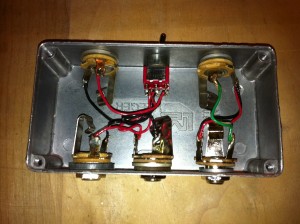
Inside the custom switch interface
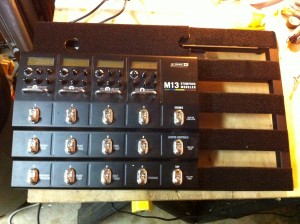
The Line6 M13 occupies a substantial area on the pedalboard
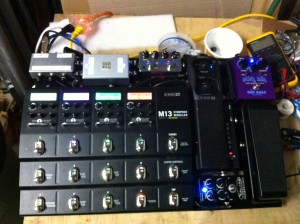
Fully loaded and wired
The (recent) history of my pedalboard
This is the third (!) complete teardown and reconfiguration of my pedalboard in the past year, but I think this one is going to stick around for while. My “big” board was based on the PedalTrain PT-Pro. At 16 x 32 inches it had more than enough room for all my pedals but was too big and too heavy – especially in its flight case. The “small” board was based on the PedalTrain PT-2 which 16 x 12.5 inches. I’ve been using this one for most of the past year. It has just enough room for the Line6 M13, the Mission Control pedal, Morley Mini Volume pedal, and the Line6 G50 receiver. I’ve been wanting to add a few boutique pedals to layout but didn’t have the room on the previous board. The PT-3 accommodates these extra pedals and still fits inside the flight case that came with my PT-2. This leaves me with a PT-2 and the soft carry bag that came with the PT-3, which should be easy to sell.
 On Friday 11/18 the 1 Uppers performed at Slim’s Last Chance Chili Shack in Seattle. This venue is one of my favorite places on our regular circuit. It’s a cozy room that gives off the perfect vibe of great music, cold beer and yummy chili.
On Friday 11/18 the 1 Uppers performed at Slim’s Last Chance Chili Shack in Seattle. This venue is one of my favorite places on our regular circuit. It’s a cozy room that gives off the perfect vibe of great music, cold beer and yummy chili.






